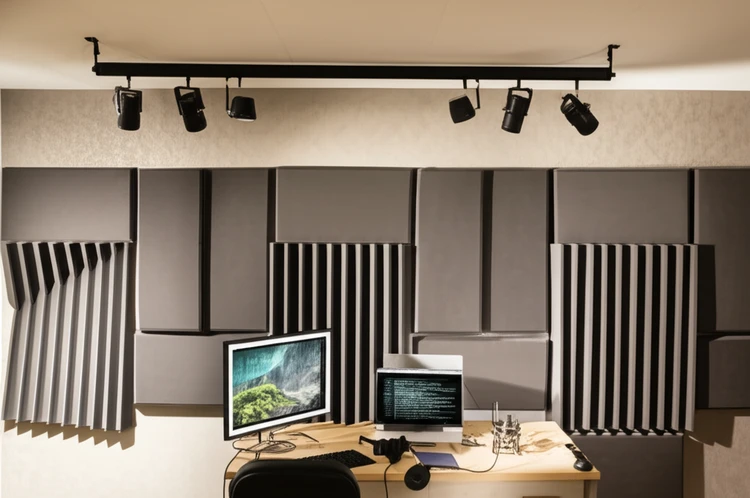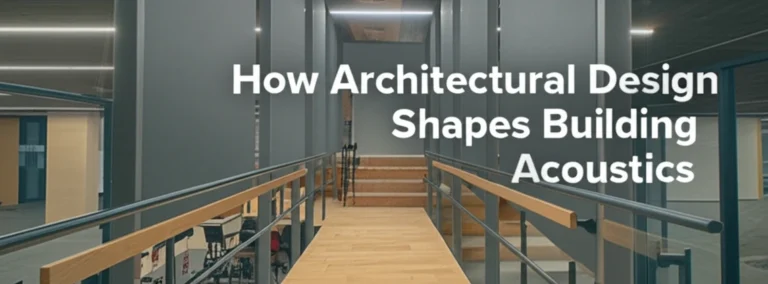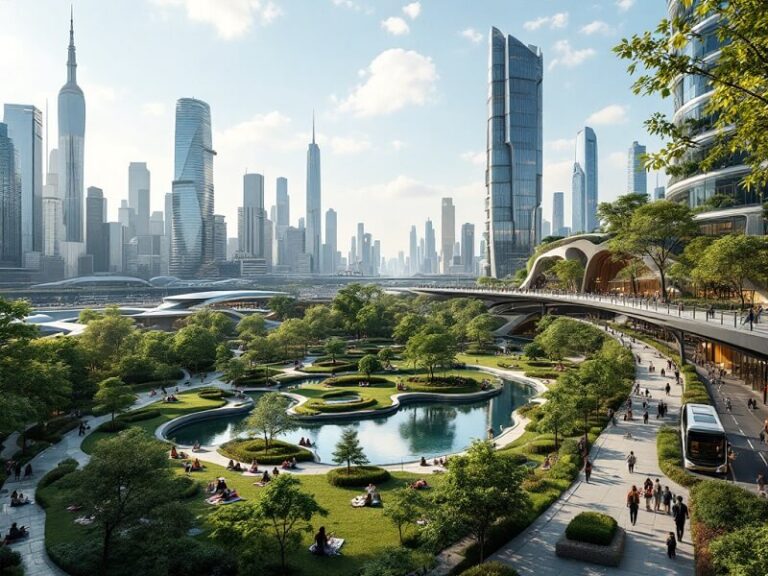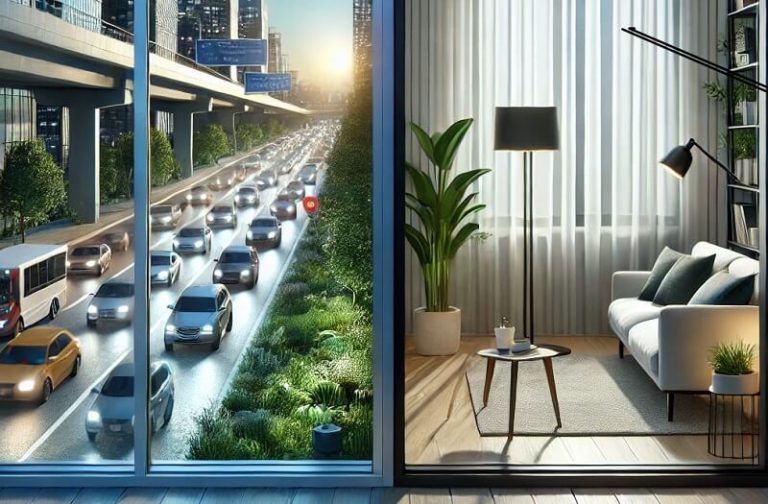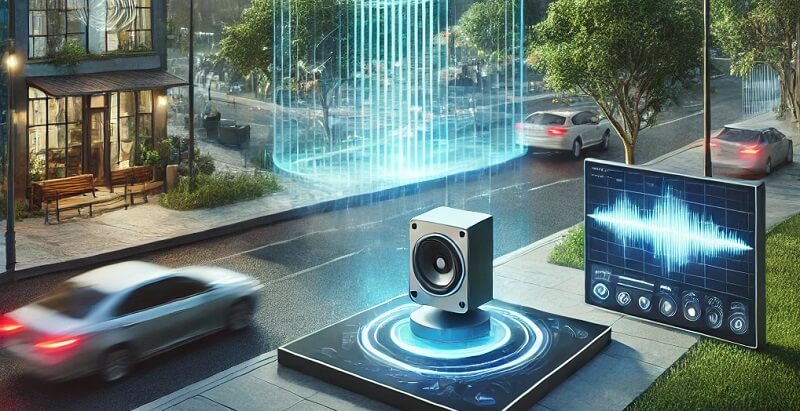
The relentless hum of traffic, the clang of construction, the murmur of countless conversations – these are the sounds that define the urban experience. But what are the main challenges in designing acoustics for urban environments, and how can we create cityscapes that are not just functional, but also sonically pleasing and healthy? Noise pollution in urban areas is a growing concern, impacting the health, productivity, and overall well-being of city dwellers.
With increasing urbanization, designing effective urban acoustics has become paramount for urban planners, architects, and policymakers alike. The challenge lies not just in mitigating unwanted noise but also in crafting environments that foster a positive and healthy auditory experience.
This article delves into the core hurdles in urban acoustic design, exploring the complexities of each challenge and highlighting innovative strategies for creating sustainable and harmonious urban living. We’ll examine real-world examples and research to illustrate the impact of noise and the effectiveness of various mitigation strategies.
Our aim is to provide a comprehensive and actionable resource for anyone interested in understanding and improving the soundscape of our cities.
The Core Challenges in Urban Acoustic Design
Managing Transportation Noise
Transportation systems, including roads, railways, and airports, are dominant sources of urban noise pollution. The constant drone of traffic and the intermittent roar of airplanes significantly degrade the quality of life for those living and working nearby. Chronic exposure to transportation noise is linked to stress, sleep disturbances, cardiovascular issues, and reduced cognitive performance.
A study published in the Journal of the Acoustical Society of America found a strong correlation between long-term exposure to traffic noise and increased risk of hypertension. Effective mitigation strategies include implementing sound barriers along roadways, utilizing quieter road surfaces such as porous asphalt which can reduce noise levels by 3-5 decibels (dB) according to research by the Federal Highway Administration, and incorporating urban planning strategies that situate residential areas away from major transportation hubs. You can learn more about these strategies here.
Tackling Construction and Industrial Noise
The continuous cycle of construction and the operation of industrial facilities contribute significantly to the urban soundscape. These activities often generate impulsive and disruptive noises, particularly during inconvenient hours.
Prolonged exposure to construction noise can disrupt daily routines, impact sleep quality, and lead to numerous complaints from nearby residents. Solutions involve implementing and enforcing noise regulations that restrict construction activities to specific times, mandating the use of quieter machinery and construction techniques, and enclosing industrial zones with sound-absorbing materials. For example, using quieter demolition methods like hydraulic shears instead of wrecking balls can significantly reduce noise levels at construction sites.
Balancing Urban Density with Acoustic Comfort
The increasing density of urban populations intensifies human-generated noise from conversations, social events, and daily activities.
Ensuring acoustic comfort in densely populated areas requires innovative approaches. Strategies include acoustic zoning, designating specific areas as quiet zones with stricter noise limits, and the strategic placement of noise buffers like green walls and strategically designed sound barriers. Research conducted by the University of Sheffield has shown that green walls can reduce noise levels by up to 10 dB.
Designing Public Spaces for Positive Soundscapes
Public spaces, intended for social interaction and relaxation, can become sources of unwanted noise if not designed carefully.
Balancing the need for vibrant activity with the desire for tranquility is a key challenge. Solutions include incorporating sound-absorbing materials in park benches and other infrastructure, using water features like fountains to mask unwanted noise and create soothing ambient sounds, and carefully planning the layout of public spaces to minimize noise conflicts.
Incorporating Green Infrastructure for Noise Reduction
Green infrastructure, such as urban forests, green roofs, and living walls, offers a nature-based solution for noise attenuation. Vegetation acts as a natural sound buffer by absorbing and diffracting sound waves.
Studies have demonstrated the effectiveness of green infrastructure in reducing noise levels in urban environments. For example, a study by the National University of Singapore found that vertical greenery systems could reduce noise levels by 5-10 dB. Cities like Singapore and London have successfully integrated green infrastructure into their urban design, demonstrating the potential of this approach to improve both acoustic quality and overall environmental health. You can explore more about these innovations here.
Navigating Noise Regulations and Policies
Noise control policies vary significantly across regions, often lacking consistent enforcement or uniformity.
This inconsistency makes it challenging to establish universal standards for urban acoustics. A cohesive and data-driven approach to noise regulation is essential. Cities like Copenhagen, which enforce strict noise limits and actively monitor compliance, provide successful frameworks that can be adapted and implemented elsewhere.
Leveraging Technology for Noise Management
Advancements in technology offer valuable tools for monitoring and managing urban noise levels.
IoT-based noise sensors and real-time acoustic mapping can provide actionable insights for urban planners. These technologies enable targeted interventions, such as identifying noise hotspots and implementing dynamic noise mitigation measures. For example, noise sensors can trigger adjustments to traffic flow or activate noise cancellation systems in real-time to minimize noise pollution in specific areas.
FAQ
What are the health impacts of urban noise pollution?
Chronic exposure to elevated urban noise levels can lead to a range of adverse health effects, including stress, hearing loss, sleep disturbances, cardiovascular problems, increased risk of hypertension, and negative impacts on mental well-being, contributing to anxiety and depression.
How can residents help reduce urban noise?
Residents can actively contribute to noise reduction by opting for quieter appliances, promptly reporting noise violations to the relevant authorities, and strategically planting vegetation around their homes to create natural sound barriers. Community engagement and noise awareness campaigns can also play a significant role in promoting quieter urban environments.
What role does architecture play in urban acoustics?
Architectural design plays a crucial role in shaping urban acoustics through the design of buildings and spaces. Features such as soundproof windows, optimized building layouts to minimize noise transmission, the use of sound-absorbing materials in building facades and interiors, and the strategic placement of balconies and other architectural elements can significantly enhance acoustic comfort within buildings and in surrounding public spaces. You can understand more about how acoustic barriers reduce noise pollution here.
Conclusion
Designing effective acoustics for urban environments presents a complex but essential challenge that demands a comprehensive and multi-faceted approach. From mitigating transportation noise to leveraging green infrastructure and harnessing the power of advanced technologies, numerous strategies can be employed to create harmonious and healthy urban soundscapes.
Addressing these challenges thoughtfully and strategically is crucial for improving the well-being and quality of life for all urban residents.
Collaboration between policymakers, urban planners, architects, acousticians, and communities is essential for driving meaningful change and building quieter, more livable cities. By exploring and implementing innovative acoustic solutions, we can create urban environments that are not only vibrant and functional but also promote the health and well-being of their inhabitants.

